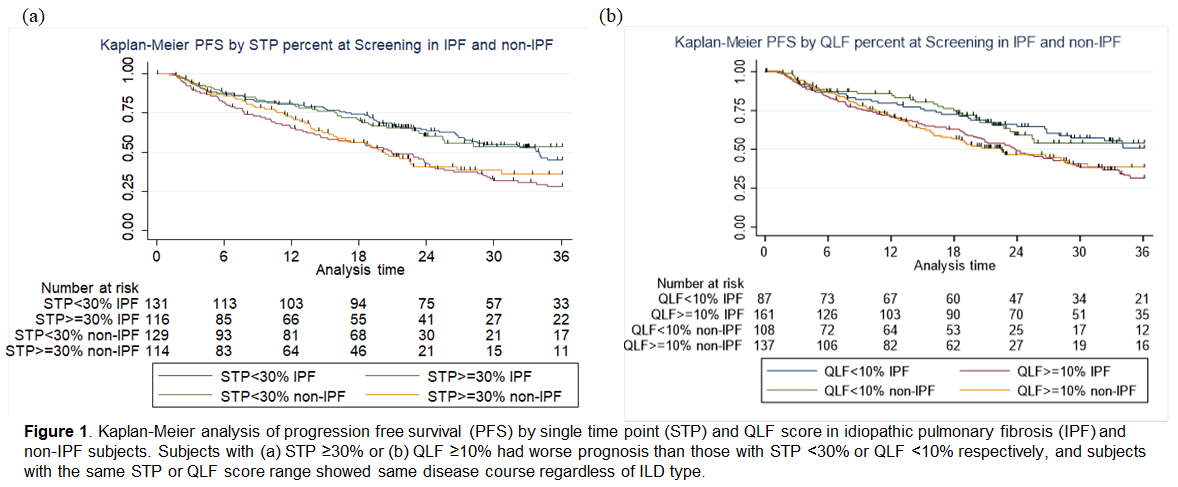Abstract
Early detection of a progressive fibrosing phenotype is crucial to improve prognosis in patients with fibrosing interstitial lung disease (fILD). The aim of this study is to test the quantitative scores from single high resolution computed tomography (HRCT) for predicting progression in fILD.
Imaging Signature idiopathic pulmonary fibrosis (IPF) is a retrospective two-center study for characterizing the imaging markers in patients with fILD (n=493; IPF=248); clinical data and HRCT images of them were collected. Single time point (STP) score, which predicts radiological worsening on 6-12 months HRCT, and quantitative lung fibrosis (QLF) score, which measures extent of lung fibrosis, were measured. Progression was defined as a 10% or more decline of forced vital capacity or death.
The mean age of total participants was 62.2 years, 59.8% were male and 44.2% progressed during the follow-up (median: 2.2 years). In the univariate Cox analyses, STP ?30%, and QLF?10% were associated with disease progression (p< 0.001 and p=0.001, respectively). When adjusted by age, sex and forced vital capacity, STP?30% and QLF?10% were independent predictors of PFS (hazard ratio:1.44, p=0.016; and 1.47, p=0.014). The high STP score group (STP?30%) showed worse prognosis than those without, regardless of ILD type (Figure 1).
Our results suggest that radiomic STP score might be a useful image biomarker for progression in patients with fILD.
